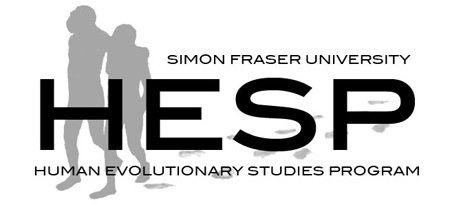Filters: Author is Collard, M. [Clear All Filters]
.
2011. Points and prey: an evaluation of the hypothesis that prey size predicts early Paleoindian projectile point form. Journal of Archaeological Science. 38:852-864. Abstract
.
2014. Continent-wide or region specific? A geometric morphometrics-based assessment of variation in Clovis point shape Archaeological and Anthropological Sciences. 6(2):145-162.
.
2010. An assessment of the impact of resharpening on Paleoindian projectile point blade shape using geometric morphometric techniques. New Perspectives on Old Stones: Analytical Approaches to Paleolithic Technologies. :255-273.
.
2010. A geometric morphometrics-based assessment of blade shape differences among Paleoindian projectile point types from western North America.. Journal of Archaeological Science. 37(2):350-359. Abstract
.
2007. Investigating the peopling of North America through cladistic analyses of early Paleoindian projectile points. Journal of Anthropological Archaeology. 26(3):366-393. Abstract
.
2008. Testing models of early Paleoindian colonization and adaptation using cladistics. Cultural Transmission and Archaeology: Some Fundamental Issues and Case Studies. :59-76.
.
2008. Phenetics, cladistics, and the search for the Alaskan ancestors of the Paleoindians: a reassessment of relationships among the Clovis, Nenana, and Denali archaeological complexes. Journal of Archaeological Science. 35(6):1683-1694. Abstract
.
2014. A reassessment of the impact of drought cycles on the Classic Maya. Quaternary Science Reviews . 105(1):151-161.
.
2014. Basal metabolic rate and maternal energetic investment durations in mammals. BMC Evolutionary Biology. 14(1):194.
.
2012. A morphometric assessment of the intended function of cached Clovis points. PLoS ONE. 7(2):1-13(e30530). Abstract
.
2011. Niche construction and the toolkits of hunter-gatherers and food producers. Biological Theory. 6:251-259. Abstract
.
2012. An assessment of the impact of hafting on Paleoindian point variability. PLoS ONE. 7(5):1-7(e36364). Abstract
.
2011. What drives the evolution of hunter-gatherer subsistence technology? A reanalysis of the risk hypothesis with data from early contact era populations in the Pacific Northwest. Philosophical Transactions of the Royal Society B. 366:1129-1138.
.
2013. Risk, mobility, or population size? Drivers of technological richness among contact-period western North American hunter–gatherers Philosophical Transactions of the Royal Society B. 368(1630):20120412. Abstract
.
2016. The acheulean handaxe: More like a bird's song than a beatles' tune? Evolutionary Anthropology. 25(1):6-19.
.
2014. Innovation and cultural transmission in the American Paleolithic: Phylogenetic analysis of eastern Paleoindian projectile point classes. Journal of Anthropological Archaeology . 34:100-119.
.
2012. Evidence that gestation duration and lactation duration are coupled traits in primates. Biology Letters.
.
2014. Estimating fossil hominin body mass from cranial variables: An assessment of using CT data from modern humans of known body mass. . American Journal of Physical Anthropology. 154(2):201-214.
.
2009. FORDISC and the determination of ancestry from cranial measurements. Biology Letters. 5(6):849-852. Abstract
.
2014. On thin ice: problems with Stanford and Bradley’s proposed Solutrean colonisation of North America. Antiquity. 88(340):622-624.
.
2013. A Reassessment of Bergmann's Rule in Modern Humans. PLOS ONE. 8(8):e72269.
.
2012. Does “The Extrinsic Risk Hypothesis” explain cross-cultural variation in age at introduction of transitional foods? Eighty-First Annual Meeting of the American Association of Physical Anthropology.
.
2015. The expression and adaptive significance of pregnancy-related nausea, vomiting, and aversions on Yasawa Island, Fiji. Evolution and Human Behaviour. 36:92-102.
.
2012. Cultural Cladistics and the Early Prehistory of North America. Evolutionary Biology: Mechanisms and Trends. :23-42.



 ]
]